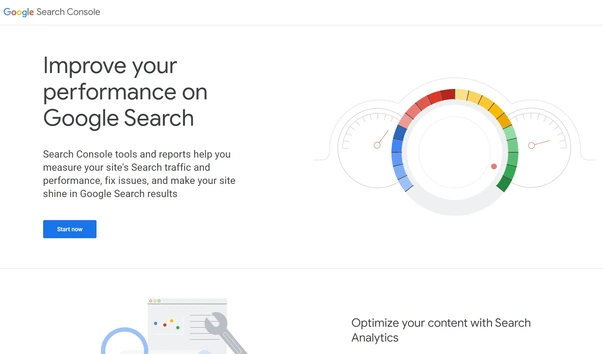We use cookies
This site uses cookies from cmlabs to deliver and enhance the quality of its services and to analyze traffic..
We use cookies
This site uses cookies from cmlabs to deliver and enhance the quality of its services and to analyze traffic..
Last updated: Aug 25, 2022

Disclaimer: Our team is constantly compiling and adding new terms that are known throughout the SEO community and Google terminology. You may be sent through SEO Terms in cmlabs.co from third parties or links. Such external links are not investigated, or checked for accuracy and reliability by us. We do not assume responsibility for the accuracy or reliability of any information offered by third-party websites.
Checking website DA and PA is something that must be done regularly. DA (Domain Authority) and PA (Page Authority) scores need to be checked periodically to determine the next optimization step.
These two metrics are the determining factors for ranking in the SERPs. Therefore, it is important to optimize DA and PA scores to get higher rankings. In this guide, we will discuss how to check your blog's DA PA and how to effectively improve it to support your business website.
Before knowing how to check and increase the DA PA of a website, you need to know the two terms first. These two terms are an assessment of a website which generally ranges from 0-100.
Domain Authority is the value obtained from the analysis of a website's overall quality. Page Authority is a score or an assessment of website quality that can predict the ranking of that page in the SERP.
Domain Authority and Page Authority metrics were developed by Moz, one of the leading SEO tools. Both of these metrics can estimate the chances of a website ranking in the SERP. The higher the score, the greater the chance for the website to rank high.
Both DA and PA scores can be an indicator of website ranking. However, a domain that has a high DA score does not necessarily rank at the top. Google will also consider the PA value and see if the website deserves a high position in the SERP.
Domain Authority and Page Authority scores can be a comparison between your website and competitor websites. By using these metrics, you can monitor the progress of website performance on a regular basis.
Knowing how to check your score is useful as material for evaluating website performance on a regular basis. Using these metrics can also give you insight into what can be done to increase the DA PA of the website.
The SEO process can be started by analyzing various aspects of the website itself. There are several things that need to be considered to increase DA and PA scores, namely inbound links, outbound links, page speed, Click Through Rate, and so on.

To find out the Domain Authority and Page Authority scores of your website, you can use tools available online. From the many website analysis check tools, we will discuss two types of free checkers that you can use for SEO purposes. Here is a review of the two free DA PA check tools:
One way to check your it is easy, use Website SEO Checker. This checking tool can provide analysis in no time. The DA PA blog check also lists the scores from each analysis that is displayed.
By using Website SEO Checker, you can see the On-Page SEO of the URL you entered. Besides the blog score, it is also worth noting other metrics that need to be evaluated to improve the overall blog performance.
Similar to other online SEO tools, Small SEO Tool is a way to check those two metrics scores that is worth a try. Analysis related to website management, keyword density, and other check tools related to SEO is available for free and you can use it anytime.
Domain Authority and Page Authority are indicators of website performance assessment. By knowing the analysis and score of the website, you can design ways to increase the DA PA of the blog itself efficiently.
The score is based on several SEO elements that contribute to supporting website performance. Here are some metrics that you need to know:
In general, the score is considering the traffic that the blog gets. In this case, the number of visitors determines whether the content is relevant or not. The more traffic, the more Google will give a high DA PA score.
In order to get high DA and PA values, it is necessary to pay attention to the number and quality of your website backlinks. To get effective and efficient results, it is better to get backlinks from one well-known and relevant website than many backlinks from low-ranking websites. In other words, you need to pay attention to the quality of the backlinks rather than the quantity.
Your blog needs high-quality content to get a high score. Readers or users will feel comfortable with the discussion provided. Therefore, make sure to always provide useful content and solve user problems.
The content does not always have to be in written form. You can experiment with various media to provide informative discussions for users. In addition, you can also create content that can connect you with users interactively.
Currently, the use of social media affects the SEO of a website. Therefore, social signals are important in determining your website PA score. In order to get the best score, you need to pay attention to the number of likes, comments, retweets, and other indicators on the social media accounts that you use.
By using the indicators found in social signals, search engines will judge that the content available on your website is relevant to user interests. That way, search intent, and volume will increase automatically over time.

Of course, to get a high ranking in the SERP, you need to pay attention to the blog's performance on a regular basis. For that, be sure to check the score and determine what things need to be improved or improved. This can help your website get a higher score than before.
In other words, you need to optimize the SEO of your website to get a high DA PA score for your blog. For that, here are some ways to increase those two metrics you can apply:
One of the important assessments for determining the domain authority and page authority score is On-Page SEO. As the foundation of your website, On-Page SEO helps Google put your domain in the SERP.
Optimizing on-page SEO will help Google inspect your site based on available data. This is a measure of the relevance of the content of the website itself.
Please note that there are several factors that need to be considered in On-Page SEO implementation. Here are some things you can do to make the most of their use:
Besides maximizing On-Page SEO performance, you should also pay attention to Off-Page SEO. There are several supporting factors for Off-Page SEO that need to be known, including brand mentions and engagement on social media.
Another element of Off-Page SEO that is no less important is link building. Its use is intended to get backlinks that function to direct users to your website. For that, make sure to build high-quality links using the right way so that your score can increase.
After checking those metrics, you need to evaluate and fix some problems. One that is often done is improvements to technical SEO. In short, technical SEO itself refers to the basic structure of a website.
To perform optimization in technical SEO, there are several things you need to do. Some of them are:
Registering the Website on Google Search Console

To make the indexing process of your website easier, you can register your blog into Google Search Console. To do this, you need to submit a sitemap or XML sitemap to the free tool from Google.
Creating an XML Sitemap
Search engines like Google need XML format files in order to read the structure of the website. Therefore, you need to provide it before registering a website with Google Search Console. For that, you can use the Sitemap Generator from cmlabs and get the results for free.
Resolving Duplicate Content
In order to get a high DA PA score, you have to tidy up the content URLs on the blog first. Make sure content that is similar in discussion is grouped first. Then use the canonical URL to indicate the main page that Google needs to index.
Installing SSL
Replace your blog URL prefix with HTTPS to get a good authority score from Google. The use of SSL can convince Google of the quality and security of the blog itself. That way, you can also increase the reputation of your website.
In general, checking the domain authority of a website includes an assessment of social signals. It is used to measure the relevance of the content you create on social media. The more the number of likes, retweets, shares, views, and comments, the higher the score that will be obtained.
In order to get a good ranking from Google, your website needs to meet the criteria for being mobile-friendly. For that, you can make settings in the selection of themes, fonts, images, and pop-up selection according to the needs of mobile device users. Use the Mobile-Friendly Test tool from cmlabs to see if your blog has implemented the right SEO or not.
Next, you need to publish content regularly. That way, the results will show a good score or increase periodically. It can also bring organic traffic and improve the performance of your website in the eyes of Google.
The last step to increase the DA PA of a website is to do an SEO audit. There are several things you can do to do this such as keyword optimization and some factors related to the domain.
That's all the discussion about the website DA PA and the strategy you can apply to increase it. By doing it regularly, you can evaluate the website's performance. After that, you can implement the best way to improve the performance of your website according to your needs.
WDYT, you like my article?